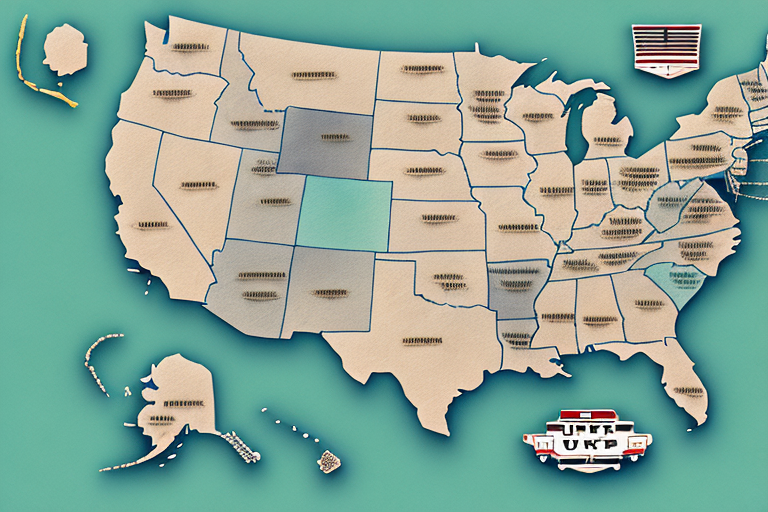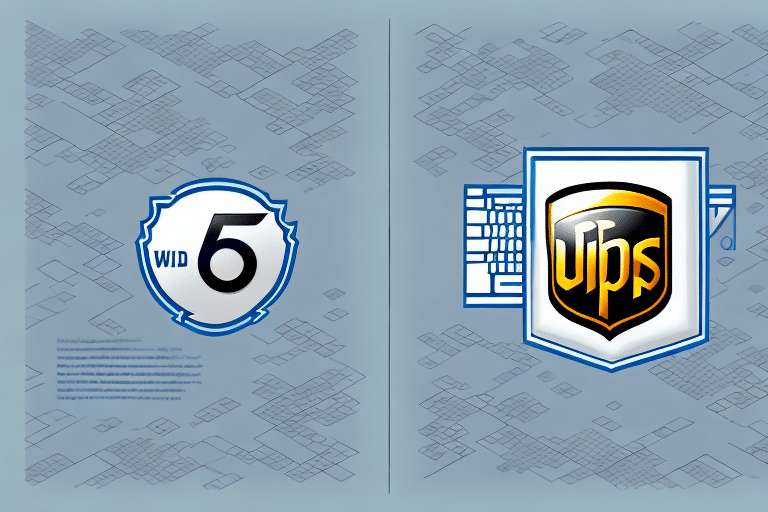Understanding UPS Shipping Rates in the USA
Shipping products and packages across the country is an essential aspect of business for many companies. With the rise of e-commerce, shipping has become even more critical. There are a variety of shipping carriers available to choose from, but UPS is one of the most popular. However, understanding how UPS calculates its shipping rates can be a bit complicated. In this article, we will discuss how UPS calculates its shipping rates, what factors affect those rates, and how you can save money on UPS shipping costs.
How UPS Calculates Shipping Rates
UPS uses a combination of factors to determine the cost of shipping a package. Some of the most important factors include the weight of the package, its dimensions, and the distance it needs to travel. Packages that weigh more or are larger in size will generally cost more to ship. Additionally, shipping to a farther destination will also increase the cost. According to UPS's [official rate guide](https://www.ups.com/us/en/support/rates.page), the shipping method you choose—whether it's Ground, Air, or International—also plays a significant role in determining the rate.
Another factor that UPS considers when calculating shipping rates is the type of package being shipped. For example, packages that are fragile or require special handling may cost more to ship due to the additional care and attention needed during transportation. UPS also offers additional services such as insurance and signature confirmation, which can add to the overall cost of shipping.
It's important to note that UPS regularly updates its shipping rates based on market conditions, fuel prices, and other economic factors. This means that the cost of shipping a package may vary depending on when and where it's being shipped. To get an accurate estimate of shipping costs, it's recommended to use UPS's online shipping calculator or consult with a UPS representative.
Factors that Affect UPS Shipping Rates
One of the most significant factors that affect UPS shipping rates is the weight of the package. As the weight of the package increases, so does the shipping cost. The size of the package is also crucial since larger packages often result in higher shipping costs, even if they are relatively lightweight. The distance the package has to travel is another critical factor, as longer distances usually come with higher shipping costs.
Other factors that can affect UPS shipping rates include the type of service you need, the time of year, and any carrier surcharges or fees. For instance, shipping during peak seasons like the holiday period may incur higher costs.
The destination of the package can also impact UPS shipping rates. Shipping to a residential address may result in higher rates compared to shipping to a commercial address. This is because residential deliveries often require additional services such as signature confirmation or delivery appointment scheduling. Additionally, shipping to remote or hard-to-reach areas may result in higher shipping costs due to the additional resources required to deliver the package.
Differences Between UPS Ground, Air, and International Shipping Rates
UPS offers a variety of shipping options, including Ground, Air, and International. Ground shipping is typically less expensive than Air shipping, making it a cost-effective option for non-urgent deliveries. According to recent data from the Statista, UPS handles millions of packages daily using its Ground service.
International shipping rates vary depending on the destination country. Shipping internationally is often more expensive due to customs fees, duties, and other regulatory requirements. It’s essential to factor in these additional costs when calculating your total shipping expenses.
Another factor to consider when choosing between UPS shipping options is the delivery time. Ground shipping may take longer than Air shipping, but it is often more cost-effective for non-urgent shipments. Air shipping is faster and more reliable, making it suitable for urgent or time-sensitive deliveries, but it can be more expensive, especially for larger or heavier packages.
UPS also offers additional services, such as insurance and package tracking, which can add to the overall cost of shipping. These services provide peace of mind and ensure that your package arrives safely and on time, but they may not be necessary for every shipment.
How to Compare UPS Shipping Rates with Other Carriers
When shopping for a shipping carrier, it's essential to compare prices to ensure you are getting the best deal. Several online tools are available to help you compare shipping rates from different carriers, including UPS, FedEx, and USPS. Websites like ShipStation offer comprehensive rate comparison features.
When comparing rates, consider the size and weight of your package, the destination, and the delivery time you need. Additionally, evaluate the level of insurance coverage each carrier offers. Some carriers may provide higher insurance coverage for a lower price, while others may charge more for the same coverage. Weigh the cost of insurance against the value of your package to determine which carrier offers the best overall value.
Aside from price and insurance coverage, consider the level of customer service offered by each carrier. Look for carriers that provide easy-to-use online tools for tracking and managing your shipments, as well as responsive customer support in case you encounter any issues. A carrier with excellent customer service can help ensure that your packages arrive on time and in good condition, providing peace of mind throughout the shipping process.
Tips for Negotiating Better UPS Shipping Rates for Your Business
If you are a regular UPS customer, you may be able to negotiate better shipping rates. Here are some tips for negotiating better rates:
- Consolidate Your Shipments: Combining multiple shipments can reduce costs by taking advantage of bulk shipping discounts.
- Ship During Non-Peak Periods: Shipping during times when demand is lower can result in lower rates.
- Offer to Sign a Long-Term Contract: Committing to a long-term relationship with UPS can provide leverage for better rates.
- Compare Rates with Other Carriers: Shopping around and comparing rates from other carriers can give you leverage in negotiations.
Your shipping volume is another critical factor when negotiating UPS shipping rates. Higher shipping volumes often qualify for better rates. Additionally, maintaining a good payment history with UPS can provide leverage in your negotiations. Always approach UPS representatives with professionalism and be prepared to provide data and information to support your request for better rates.
Understanding the Different UPS Shipping Zones and How They Affect Rates
UPS divides the United States into different shipping zones, ranging from Zone 1 (local) to Zone 8 (farthest distance). The shipping cost increases with each zone, so it's important to understand which zone your package falls under and how it can affect the shipping price. You can find detailed zoning information on the [UPS Shipping Zones](https://www.ups.com/us/en/help-center/knowledge-base/article.page?kid=aa5wM3bLW5hn7V4cUKbbDw) page.
The size and weight of your package can also affect the shipping rate. UPS has specific weight and size restrictions for each shipping zone, and exceeding these limits can result in additional fees. Additionally, certain items may be restricted or prohibited from shipping to specific zones, so it's important to check UPS's [guidelines](https://www.ups.com/us/en/help-center/packaging-support.page) before sending your package.
How to Estimate UPS Shipping Costs for Your Packages
Estimating UPS shipping costs can be challenging, but UPS offers an online calculator that can help. Ensure you have accurate information about the weight and size of your package, as well as the destination, to get an accurate estimate. Remember that this is just an estimate and that the actual cost may vary based on additional factors.
Another important factor to consider when estimating UPS shipping costs is the type of service you need. UPS offers a variety of shipping options, including Ground, Air, and International services. Each service has different delivery times and costs, so it's important to choose the one that best fits your needs. Additionally, UPS offers additional services such as insurance and package tracking, which can also affect the overall cost of shipping.
Common Mistakes that Increase Your UPS Shipping Costs
Some common mistakes that can increase your UPS shipping costs include:
- Inaccurate Weight and Size Measurements: Always measure and weigh your packages accurately to avoid unexpected fees.
- Not Taking Advantage of Discounts: Utilize available discounts and negotiate rates if you are a regular shipper.
- Choosing the Wrong Shipping Method: Selecting an inappropriate shipping method for your needs can lead to unnecessary costs.
- Poor Packaging: Improperly packaged items can become damaged during transit, resulting in additional fees and charges.
- Incorrect Labeling: Ensure that your packages are labeled correctly to prevent delays or losses that can incur extra charges.
Additionally, failing to research and compare rates from different carriers or not negotiating better rates with UPS can also lead to higher shipping costs.
How to Save Money on UPS Shipping Costs without Compromising Quality of Service
Despite the many factors that can increase the cost of UPS shipping, there are several ways to save money:
- Consolidate Shipments: Combine multiple shipments into one to take advantage of bulk shipping discounts.
- Take Advantage of Discounts: Utilize any available discounts, such as volume discounts or special promotions.
- Negotiate Better Rates: Engage with UPS representatives to negotiate more favorable rates based on your shipping volume.
- Optimize Packaging: Use efficient and appropriate packaging to minimize size and weight, reducing shipping costs.
- Reduce Shipment Frequency: If possible, consolidate orders to reduce the number of shipments, thereby saving on costs.
Implementing these strategies can help you reduce your UPS shipping costs while maintaining the quality of service your business relies on.
Understanding the Impact of DIM Weight on UPS Shipping Rates
UPS and other carriers now use dimensional weight (DIM weight) to calculate shipping rates for larger packages. DIM weight refers to the amount of space a package takes up in relation to its actual weight and can significantly affect the shipping cost. The formula for DIM weight used by UPS is:
DIM Weight = (Length x Width x Height) / 139
For example, a package with dimensions 12" x 12" x 12" would have a DIM weight of approximately 12.4 lbs. If the DIM weight is greater than the actual weight, UPS will charge based on the DIM weight. Understanding how DIM weight is calculated can help you optimize your packaging to avoid unnecessary costs.
Best Practices for Packaging Your Products to Avoid Additional Fees
Proper packaging is critical to prevent damage to your products during shipping and to avoid additional fees. Here are some best practices for packaging your products:
- Use Sturdy Boxes: Choose boxes that are strong enough to withstand the weight and handling of your items.
- Pad Contents: Use padding materials like bubble wrap, packing peanuts, or foam inserts to protect your items.
- Secure the Package: Use appropriate tape to seal the package securely, ensuring all seams are reinforced.
- Label Correctly: Ensure that the shipping label is clearly printed and securely attached to the package.
- Avoid Overpacking: Do not overstuff the box, as this can lead to increased dimensional weight and higher shipping costs.
Adhering to these packaging best practices can help you avoid damage during transit and prevent additional fees associated with improper packaging.
How to Track and Manage Your UPS Shipping Costs Effectively
Managing your shipping costs can be challenging, but there are tools available to help:
- UPS Online Tracking: Use the UPS tracking system to monitor your shipments in real-time and manage your shipping activities efficiently.
- Shipping Software: Implementing shipping software like ShipStation can streamline the shipping process, compare rates, and manage multiple carriers from a single platform.
- Custom Integrations: Integrate UPS shipping systems with your existing business platforms to automate shipping processes and take advantage of additional discounts.
- Data Analytics: Utilize data analytics to track shipping patterns, identify cost-saving opportunities, and make informed shipping decisions.
By leveraging these tools and strategies, you can effectively manage your UPS shipping costs and optimize your overall shipping strategy.
Understanding the Role of Insurance in Protecting Your Shipments and Reducing Costs
Shipping insurance is an essential aspect of protecting your shipments from loss or damage during transit. While UPS includes basic insurance coverage for most packages, additional insurance is recommended for valuable or delicate items. According to UPS, you can purchase additional declared value coverage to protect against potential losses.
Insurance can also help reduce costs by minimizing the financial impact of lost or damaged packages. In the event of a claim, having adequate insurance coverage ensures that you are compensated for the loss, thereby protecting your business’s financial health.
To purchase additional insurance, you can select the desired level of coverage during the shipping process through the UPS shipping calculator or consult with a UPS representative for more information.
How to Use Technology to Optimize Your UPS Shipping Strategy
Advances in technology have made it easier than ever to optimize your shipping strategy and reduce costs. Here are some effective technology solutions for shipping:
- Automated Shipping Software: Tools like ShipStation automate the shipping process, allowing you to print labels, compare rates, and manage multiple carriers efficiently.
- Integration with Business Platforms: Integrate your shipping systems with e-commerce platforms, inventory management systems, and accounting software to streamline operations and reduce manual errors.
- Data Analytics: Use data analytics to analyze shipping patterns, identify cost-saving opportunities, and make informed decisions based on real-time data.
- Tracking and Management Tools: Implement advanced tracking systems to monitor your shipments in real-time, ensuring timely deliveries and addressing any issues promptly.
These technology solutions can help reduce errors, save time, and minimize shipping costs, allowing you to focus on growing your business.
In conclusion, understanding UPS shipping rates can be challenging, but it is an essential aspect of running a successful business. By following these tips and best practices, you can reduce costs and ensure that your shipments are delivered efficiently and effectively.




















